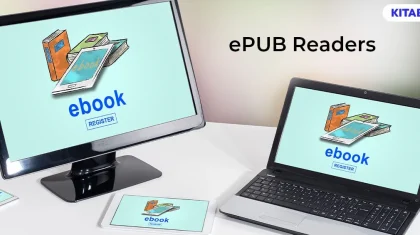
The Cost-Effectiveness of Digital Textbooks in Schools
Summarize this blog with your favorite AI:
Technology has revolutionized the field of education. There has been an increase in popularity among students and educational institutions regarding the use of digital textbooks in education.
As students progress into higher education, the cost of textbooks tends to escalate significantly. Depending on the academic discipline, the expense of purchasing books can impose a considerable financial strain on students.
A highly effective approach to accessing quality education is opting for digital versions of the required textbooks for the student’s curriculum. This choice can substantially alleviate the financial burden associated with traditional print materials.
Table of Contents:
I. What are Digital Textbooks?
II. Advantages of Digital Textbooks
- Cutting Back on Costs
- Ease of Distribution
- Portability and Accessibility across Devices
- No Storage Requirement
- Frequent Access to Updates
- Familiarity with the Media
- Self-Learning
- Multimedia and Interactive Features
- Environmental Sustainability
- Interactive Learning Experience
What are Digital Textbooks?
A digital textbook is an electronic version of a printed book. They can be used both by students and teachers in different learning environments, be it remote or in person. A copy of the digital textbook can be downloaded and used on any device, or it can be accessed online via browsers and apps. Some digital textbooks are a copy of the printed version, while others can have hyperlinks or other interactive features.
Digital textbook platforms like KITABOO come in handy for educational institutions and publishers. With robust DRM protection and secure distribution capabilities, this platform ensures that copyrighted material is protected from unauthorized access or distribution.
Advantages of Using Digital Textbooks in Schools
There are multiple benefits of incorporating digital textbooks as a mode of learning in schools. Some of these have been discussed below.
Cutting Back on Costs
One of the most obvious benefits of using an eBook version of a printed textbook is that eBooks are generally much cheaper than the printed version. They are not only more affordable for schools but also for students.
It also becomes affordable to procure newer editions of the books in the curriculum. Online textbooks do not come with a shipping cost and can often be upgraded to a newer edition for free or at a minimal cost. This is one of the reasons that come up when asked if schools should move to digital textbooks.
Ease of Distribution
Schools don’t have to wait for students to purchase a book, nor do they have to spend time and money procuring the books for the students.
By adopting digital textbooks in schools, teachers and students can instantly have the books available by downloading them on their devices. In addition to that, they can also make use of the extra reading materials and workbooks that come included with the digital textbooks.
Books published through KITABOO, a leading digital textbook platform, can be accessed on any operating system, be it iOS, Android, or Windows.
Portability and Accessibility across Devices
Digital textbooks are not limited to a particular device. Teachers and students can easily access a digital textbook from whichever device is available to them. They no longer need to carry around a hefty book from their home to school or from one class to another. These eBooks can be easily accessed from a library or a school computer.
No Storage Requirement
By shifting to digital textbooks, schools no longer need to store traditional printed textbooks or arrange to ship them to students. This also opens up space in the classroom for digital accessories such as screens and relieves the school authorities from recording and tracking every physical book they have stored.
Frequent Access to Updates
School textbooks in higher education are often updated by the publishers every few years.
Once a new edition is published, the school will then have to place an order with the publisher and wait till they have received the copies. With digital textbooks, this gap is decreased. Students are able to get the newly published eBooks as quickly as possible and get updated with knowledge as per present-day standards.
Familiarity with the Media
Students today are constantly immersed in screens and technology. Therefore, it might be difficult for them to switch to reading on a printed medium. Digital textbooks become a type of media that is more familiar to them. The interactivity that digital textbooks offer mimics the fast-paced and dynamic world of the Internet.
Self-Learning
Online textbooks allow students to study at their own pace. While reading a book, students can find hyperlinks that will help them access additional reading materials, helping them expand their knowledge of a particular subject. It also becomes easier to bookmark a page in digital textbooks with a click or tap of a button.
Multimedia and Interactive Features
Besides plain old text, online textbooks might include audio and video materials that will enhance the learning experience for students.
Students will be able to consume the study materials with the help of different learning styles. eBooks might include quizzes and questionnaires throughout the book that are interactive in nature and provide a quick evaluation for the students taking them. No longer will students have to be dependent on teachers to give them assignments and evaluate them.
Environmental Sustainability
Digital textbooks contribute to environmental sustainability by reducing paper consumption and minimizing waste associated with printed materials. Using digital resources aligns with eco-friendly practices and supports schools’ efforts towards promoting environmental consciousness among students.
Interactive Learning Experience
Digital textbooks often incorporate multimedia elements such as videos, interactive quizzes, and simulations that enhance the learning experience. These interactive features engage students more actively, making learning dynamic and stimulating compared to traditional static textbooks.
How are Digital Textbooks Beneficial for Teachers?
Here’s a snapshot of how digital textbooks can be beneficial for teachers:
Collaboration with Students
Digital textbooks in schools make it easier to collaborate with the students while teaching lessons in class. Students can share their notes with the teacher and other students directly through the digital textbooks. They get the ability to share questions, notes, annotations and other forms of input that are then shared and surveyed in real time. This kind of collaboration helps students learn their content well while also participating in the
Customization of Reading Material
Teachers can use digital textbook platforms to create reading material, quizzes, and exercises that are particularly designed for each student based on their strengths and weaknesses. They can alter every part of the digital textbook to provide a personalized learning experience for the students.
Real-Time Updates and Revisions
Unlike printed textbooks that require new editions to be printed for updates, digital textbooks can be updated in real-time. Teachers have access to the most current information and can seamlessly incorporate updates into their teaching.
Final Words
The shift towards digital textbooks in schools promises significant benefits for educational institutions and students alike, enriching the overall learning experience.
Overall, using digital textbooks not only makes education more affordable and accessible for students today but also fosters interactive and engaging learning experiences.
To explore the tools and resources available for integrating digital textbooks into school curricula, visit KITABOO. It is a leading digital textbook platform that provides comprehensive solutions for incorporating digital textbooks into school curricula.
Connect with us now to discover how these innovative tools can transform education in 2025.
Discover how a mobile-first training platform can help your organization.
KITABOO is a cloud-based platform to create, deliver & track mobile-first interactive training content.



